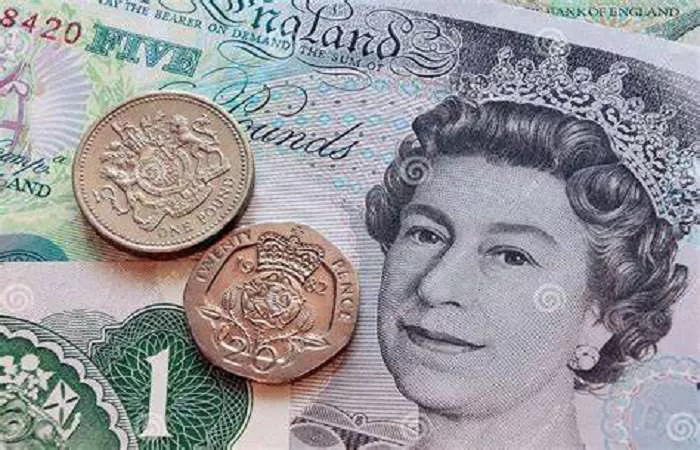In the vast and dynamic realm of the foreign exchange (forex) market, understanding the value of one currency in terms of another is fundamental. The relationship between the United States dollar (USD) and the British pound sterling (GBP) is not only one of the most widely traded currency pairs but also a crucial indicator of economic health and market sentiment across the Atlantic. When we pose the question “What is $100 in British pounds? ”, we are delving into a complex web of economic factors, market mechanisms, and historical trends. The forex market is the largest and most liquid financial market globally, with trillions of dollars’ worth of currencies being exchanged daily. This market enables businesses, investors, and individuals to convert one currency into another, facilitating international trade, investment, and tourism. The exchange rate between the USD and GBP represents the price at which one currency can be exchanged for the other. It fluctuates constantly due to a multitude of factors, making the value of $100 in British pounds a moving target.
Factors Influencing the USD-GBP Exchange Rate
Macroeconomic Indicators
Macroeconomic data from both the United States and the United Kingdom play a pivotal role in determining the exchange rate between the USD and GBP. Key indicators include gross domestic product (GDP), inflation rates, interest rates, and employment figures.
GDP Growth: A higher GDP growth rate in the United States relative to the UK may lead to an appreciation of the dollar. This is because a growing economy attracts foreign investment, increasing the demand for the domestic currency. Conversely, robust GDP growth in the UK can strengthen the pound. For example, if the US economy experiences a period of rapid expansion, businesses and investors may seek to invest in US assets, driving up the value of the dollar and decreasing the amount of pounds that $100 can buy.
Inflation Rates: Inflation erodes the purchasing power of a currency. Central banks often respond to inflation by adjusting interest rates. If the inflation rate in the UK is higher than in the US, the Bank of England may raise interest rates to combat inflation. Higher interest rates can attract foreign investors, increasing the demand for the pound. However, if inflation is high in the US and the Federal Reserve raises rates more aggressively than the Bank of England, the dollar may strengthen.
Interest Rates: Interest rate differentials between the two countries are a major driver of the USD-GBP exchange rate. Higher interest rates in the United States make US assets more attractive to foreign investors, leading to an influx of capital and an appreciation of the dollar. Conversely, higher interest rates in the UK can make British assets more appealing, strengthening the pound. For instance, if the Federal Reserve raises rates while the Bank of England keeps rates stable, the dollar is likely to gain value against the pound, meaning $100 will be worth more pounds.
Political Stability and Geopolitical Events
Political stability is crucial for a country’s economic health and the value of its currency. In the UK, events such as Brexit had a significant impact on the pound. The uncertainty surrounding the UK’s withdrawal from the European Union led to increased volatility in the GBP. When political instability prevails, investors may become risk-averse and move their funds to more stable currencies, such as the US dollar. Geopolitical events, such as trade disputes between the US and other countries or international conflicts, can also affect the USD-GBP exchange rate. For example, a trade war between the US and China may lead to a flight to safety, with investors flocking to the US dollar, strengthening it against the pound.
Market Sentiment and Speculation
Market sentiment and speculation can have a substantial influence on the USD-GBP exchange rate. Traders and investors often form expectations about future economic and political developments, and these expectations can drive currency movements. For example, if market participants anticipate that the UK economy will perform well in the future, they may buy pounds in anticipation of its appreciation. On the other hand, if there is negative sentiment towards the US economy, the dollar may decline against the pound. Speculators also play a role in the forex market, using various trading strategies to profit from currency fluctuations. Their actions can amplify short-term movements in the exchange rate.
Historical Trends in the USD-GBP Exchange Rate
Over the past few decades, the USD-GBP exchange rate has exhibited significant fluctuations. In the 1980s and 1990s, the pound faced various challenges, including economic recessions and currency crises. The ERM (Exchange Rate Mechanism) crisis in 1992, also known as “Black Wednesday,” led to the UK’s withdrawal from the ERM and a sharp depreciation of the pound. In the 2000s, the global financial crisis had a profound impact on both the US and UK economies. The Federal Reserve and the Bank of England implemented various monetary policies to stimulate their economies, which affected the exchange rate. In recent years, Brexit has been a major factor driving the volatility of the GBP. The pound experienced significant swings in value as negotiations between the UK and the EU progressed.
Conclusion
The question “What is 100 in British pounds?” may seem simple at first glance, but it encompasses a complex interplay of economic, political, and market factors. The value of \)100 in British pounds is constantly changing due to fluctuations in the USD-GBP exchange rate, which is influenced by macroeconomic indicators, political stability, market sentiment, and more. Understanding these factors is essential for businesses, investors, tourists, and anyone involved in the forex market. By staying informed and implementing appropriate risk management strategies, stakeholders can navigate the challenges and opportunities presented by the dynamic nature of the USD-GBP exchange rate.
Related topics:
- Current Exchange Rate: 20,000 Rupiah in Australian Dollars
- Current USD Exchange Rate: $30 USD in Australian Dollars
- Can the Indian Rupee be Used in Thailand?


